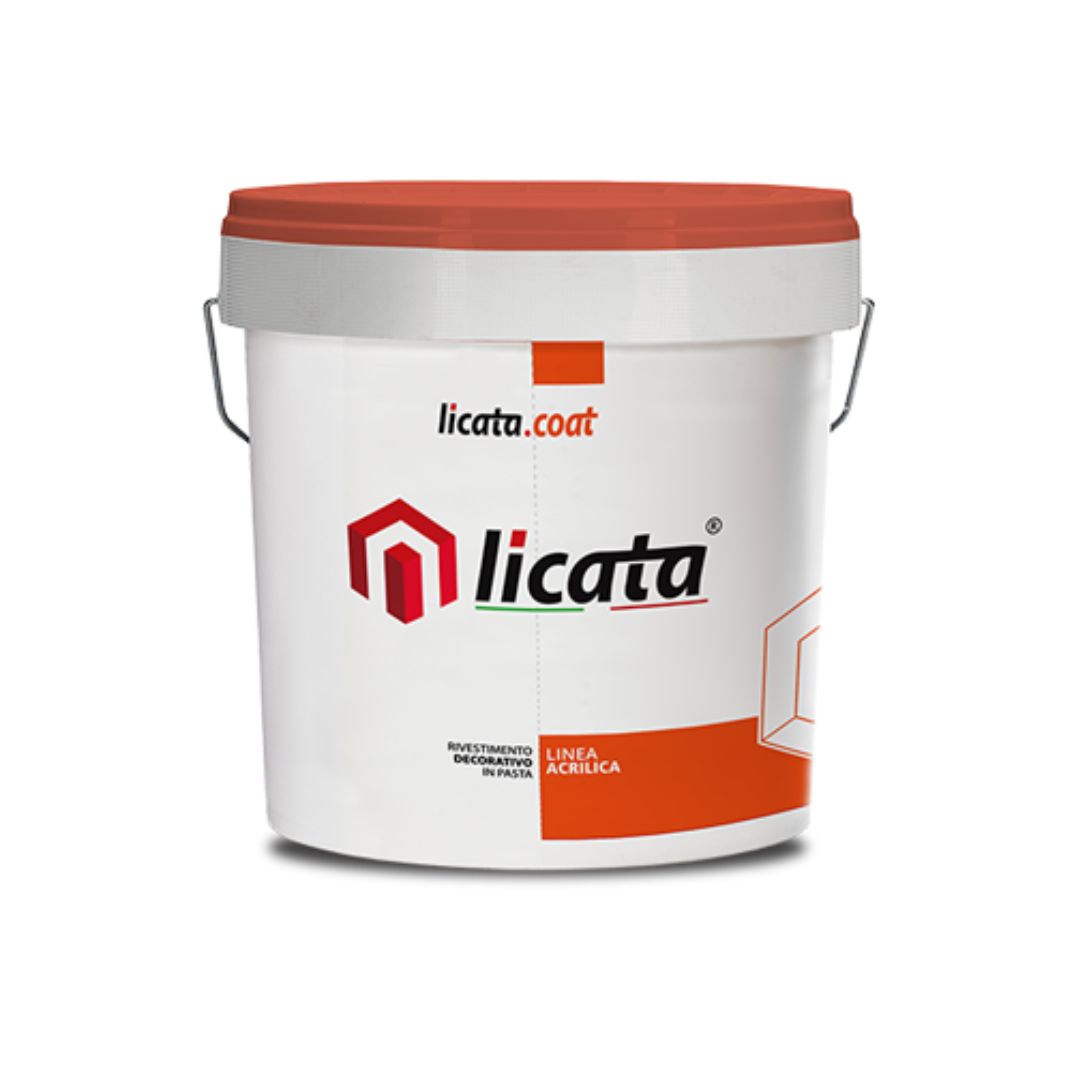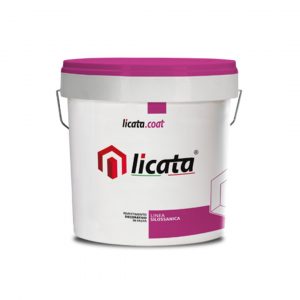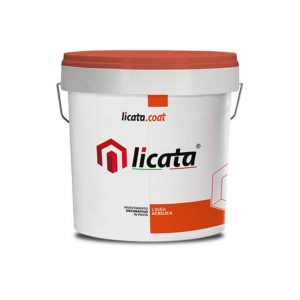Vitrea Quartz, for external use, provide high resistance to atmospheric agents and pollutions. Vitrea Quartz also provides excellent adhesion to the substrate, high resistance to washing and, thanks to a special anti-mildew additive of which it is composed, is adding the resistant to algae, fungi and moulds.
![]() Low dirt pick-up
Low dirt pick-up
![]() High water repellency
High water repellency
![]() Versatility
Versatility
![]() Protection against mould and algae
Protection against mould and algae
![]() Wide range of colours
Wide range of colours
Description
Vitrea Quartz Acrylic Paint
Vitrea Quartz is indicated for the decoration of substrates in internal and external environments, on new or existing residential, industrial or commercial buildings | It is recommended for use on cured substrates, i.e. after a curing time of at least four weeks | it is applicable on substrates such as: lime or lime/cement based plasters | reinforced skim coats in the cycles of the restoration of facades | concrete | prefabricated concrete panels | old paint as long as it is still cohesive and consistent.
Characteristics
- Low dirt pick-up: Vitrea Quartz is also ideal as a final decorative finish for facades in places subject to high concentrations of dust or pollutants, thanks to its low dirt pick-up.
- High water repellency: the special formulation of Vitrea Quartz provides complete protection from atmospheric agents, creating an unbroken skin that prevents penetration by rainwater, thus keeping walls dry.
- Versatility: the fine grading curve combined with meticulous research and selection of raw materials means professionals can apply Vitrea Quarzo both manually (brush/roller), and mechanically (airless).
- Protection against mould and algae: the special mould-proof additives present in the formula ensure an excellent degree of protection against the formation of mould and algae.
- Wide range of colours: from pastel shades to particularly vibrant ones, Vitrea Quarzo can be pigmented in over 600 different colours.
Why Use Vitrea Quartz Acrylic Paint?
Painting with Vitrea Quartz Acrylic Paint is a great way to add colour and life to your home or business. The colours are vibrant, the paints are easy to work with and the cost is reasonable. The quality is unparalleled, bringing even the dullest of rooms and projects to life.
Vitrea Quartz Acrylic Paints can be used for a variety of different painting projects. They are often used in rooms, but they can also be used to create beautiful art on the walls of your home or business.
Indeed, Vitrea Quartz Acrylic Paints have bright, vivid colours that are perfect for a variety of home and business decorating projects. You can paint your walls with acrylics to add colour to your room or you can create colourful art on the wall. Vitrea Quartz Acrylic Paints allow you to use more colours on your brush than oil paints do, which makes the paint less expensive and more vibrant.
A lot of our clients like to paint their homes with acrylics because they are water-resistant, and Vitrea Quartz Acrylic Paints don’t disappoint. You will not have to worry about painting your home, only to find that the next time it rains, all your hard work was ruined. These paints will hold up against moisture and still boasts bright, vibrant colours.
Why not use an alkyd paint?
If you are a homeowner trying to decide which type of paint to apply to your home’s exterior you may be confused by the oil (alkyd) vs acrylic debate. In truth, it’s not much of a debate anymore. For more than 150 years, since they first became commercially available, oil-based house paints were the standard.
The problem with alkyd paints, however, is that they take a long time to cure, often contain harsh chemicals and they emit Volatile Organic Compounds or VOCs as they cure. Recent advancements in acrylic paint mean they’re more hydrophobic and durable than ever and they don’t have any of the downsides of oil paint. So in most cases, there is no debate: acrylic paint is the smart choice.
What are VOCs and why should I care?
You may be wondering what VOCs are and why it’s important that your house paint does not emit them, or emits only a tiny fraction of those emitted by oil-based paints.
Alkyd paints release a variety of chemicals into the air in vapour or gas form as they cure in a process known as “off-gassing”. These Volatile Organic Compounds have been shown to irritate the eyes, nasal passages and throat, and when inhaled in sufficient quantities can aggravate respiratory conditions such as asthma and bronchitis.
What’s more, VOCs in paint can be a problem because they are released during and after the application of paint. VOCs are not only dangerous for children or pets, but they are also hazardous to adults and pregnant women.
The most common symptoms of exposure to VOCs includes headaches, nausea, dizziness, dry eye, difficulty concentrating, weakness, shortness of breath and tightness in the chest. These chemicals can also have an effect on your central nervous system, not just your respiratory system.
If you are concerned about the health implications of VOCs in paint, there are a few ways to avoid them. It is best to use paints that have lower levels of VOCs, like zero-VOC paints. Zero-VOC paints do not contain any VOCs, which eliminates the risk of exposure.
If you don’t want to switch to a zero-VOC paint and want to reduce your exposure, use low-VOC paints. Low-VOC paints contain fewer VOCs than standard paints, but they still emit some.
Additional health risks posed by VOCs
Some people have reported nausea and difficulty breathing as a result of VOCs, while some health professionals warn that repeated exposure may cause damage to the nervous system. Using oil paint on interior applications will tend to amplify the negative effects of VOCs, which is why oil-based paints are almost never used indoors in the UK anymore.
Given that there are outstanding alternatives such as Licata Vitrea Quarzo available nowadays, alkyds are only rarely used outdoors anymore either. Vitrea Quarzo and our other exterior acrylic paints not only go on easy, cure fast, last for many years, repel water and look great, they also emit almost no VOCs. Therefore they can be used safely in most environments, even those where children and people with respiratory conditions are present.
Acrylic Paint vs. Other Paint Types: Which One is Right for You?
Choosing the right paint depends on the surface, durability requirements, and the desired finish. While oil paints have long been used for artwork and home décor, their long drying time, high VOC emissions, and strong odour make them less practical for modern applications.
On the other hand, acrylic paint is a fast-drying, water-resistant alternative that delivers vibrant colours and long-lasting quality. Unlike oil paint, which requires solvents for cleaning, acrylic paint can be cleaned with just water.
| Paint Type | Drying Time | Durability | Application | Cleaning |
|---|---|---|---|---|
| Acrylic Paint | Fast drying (minutes to hours) | Water-resistant, long-lasting | Interior & exterior surfaces | Water-based, easy cleanup |
| Oil Paint | Slow drying (days to weeks) | Highly durable but prone to yellowing | Interior artwork, traditional finishes | Solvent-based, requires turpentine |
| Craft Paint | Quick drying | Less durable | Small projects, decorative art | Water-based, easy cleanup |
For walls, facades, and other surfaces, our acrylic polymer emulsion formula ensures a smooth, even coat that resists peeling and fading over time.
How Acrylic Paint Reacts to Different Surfaces
One of the reasons many artists and professionals prefer acrylic paint is its ability to adhere to a range of materials, from canvas and wood to concrete and plaster. Our Vitrea Quarzo range has been formulated to bond strongly with substrates, ensuring maximum durability.
- Canvas – Ideal for fine art and detailed techniques such as glazes and layering.
- Concrete & Plaster – Our high-quality acrylic polymer emulsion prevents moisture penetration, keeping surfaces water-resistant.
- Wood & MDF – Great for decorative artwork, signage, and textured effects.
- Previously Painted Surfaces – Adheres well when properly primed with gesso or a sealer.
With our advanced acrylic mediums, you can modify acrylic paint to create washes, thick layers, or smooth glazes, depending on the desired styles and techniques.
The Role of Primers and Sealers in Acrylic Painting
Using a primer or sealer before applying acrylic paint enhances adhesion and prevents cracking over time. For best results, professionals recommend:
- Gesso – Prepares canvas, drywall, and paper for a smooth, even finish.
- Acrylic Gels & Mediums – Modify texture, achieve a matte finish, or enhance fluid acrylics for wet-on-wet techniques.
- Varnishes – Protect the final layer from dust, moisture, and UV exposure.
Our heavy body acrylics, soft body acrylics, and fluid acrylics offer exceptional durability, allowing professionals and artists to experiment with different combinations of techniques for long-lasting, high-performance paint finishes.
Additional Info
| Colours | White |
|---|---|
| Consumption | 0.250 – 0.350 kg/m² |
| Weight | 20 KG |




